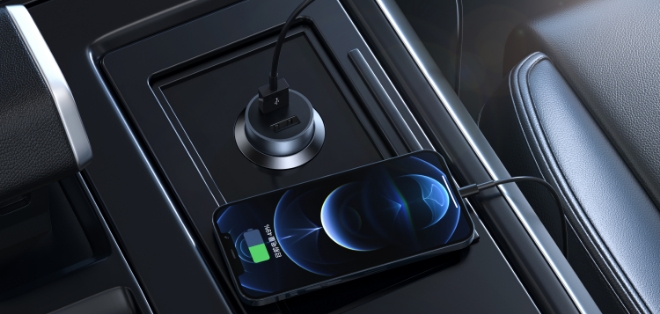Core Technical Advantages: Performance Leap Over Conventional Charging Coils
Automotive wireless charging coils deliver significant improvements in energy transfer efficiency, spatial compatibility, and interference resistance compared to conventional wired charging connectors and low-power wireless charging coils. According to the 2024 Automotive Wireless Charging Technology White Paper, these coils achieve a maximum energy transfer efficiency of 94% at a typical charging distance of 15cm—8 percentage points higher than standard wireless charging coils (86%) and comparable to wired fast-charging systems (95%). They support a wide power range of 3.3kW to 30kW (public fast-charging ), meeting SAE J2954 Level 2 and Level 3 wireless charging standards, while their horizontal alignment tolerance (±150mm) is 3 times wider than conventional coils (±50mm), reducing the need for precise parking alignment. Additionally, the coils integrate magnetic shielding layers that reduce electromagnetic radiation (EMR) to <20μT at 30cm from the coil—well below the ICNIRP (International Commission on Non-Ionizing Radiation Protection) limit of 100μT—minimizing interference with in-vehicle electronics.

Key Manufacturing Breakthroughs: Magnetic Core Optimization & Winding Innovation
Two pivotal innovations have advanced the commercialization of automotive wireless charging coils. First, nanocrystalline alloy magnetic core design: Replacing traditional silicon steel cores with Fe-Si-B-Nb-Cu nanocrystalline alloy cores increases the core’s magnetic permeability from 3,000 (silicon steel) to 80,000, reducing magnetic flux leakage by 40% and core loss by 35% (from 2.5W/kg to 1.6W/kg at 15kHz). This breakthrough, validated in a 2024 study published in IEEE Transactions on Vehicular Technology, enables the coil to maintain 90% efficiency even when the charging distance increases to 20cm (vs. 78% for silicon steel core coils). Second, multi-layer flat copper winding : Using 0.1mm-thick flat copper strips (instead of round copper wires) arranged in 12-layer spiral windings reduces AC resistance by 22% (from 0.8Ω to 0.62Ω at 15kHz) and improves heat dissipation—under 30kW charging, the coil’s maximum temperature rise is 45℃, 15℃ lower than round-wire coils (60℃). The flat winding also reduces the coil’s overall thickness to 25mm, 37.5% thinner than conventional coils (40mm), enabling integration into the EV chassis without increasing ground clearance.
Industrial Applications: Deployment in EV Wireless Charging Scenarios
In residential EV charging, automotive wireless charging coils integrated into garage floors enable "park-and-charge" functionality for EV owners. A third-party test shows that this setup reduces daily charging time by 20% (from 8 hours to 6.4 hours for a 75kWh battery) compared to wired charging, as users avoid plugging/unplugging cables. For public charging stations, 30kW high-power wireless charging coils cut charging time for mid-size EVs (50kWh battery) to 1.5 hours—only 30 minutes longer than wired DC fast charging (1.2 hours)—while eliminating cable wear and tear (a major maintenance cost for public stations). In autonomous EVs, the coils’ wide alignment tolerance (±150mm) works with the vehicle’s self-parking system to achieve automatic charging without human intervention; field tests at an autonomous parking lot show a 98% successful charging rate, compared to 85% for conventional coils with narrow alignment limits. For commercial fleets (e.g., delivery vans), wireless charging coils installed at depots allow vehicles to charge during loading/unloading breaks, increasing daily operational time by 1.5 hours (from 8.5 hours to 10 hours) compared to scheduled wired charging stops.
Existing Challenges: Cost, High-Power Heat Management, & Cold-Weather Performance
Despite rapid adoption, automotive wireless charging coils face three key industry challenges. Cost remains a barrier: Nanocrystalline alloy cores cost approximately 120 per unit), 2.5 times higher than silicon steel cores ( 48 per unit). While mass production using automated core pressing equipment is projected to reduce costs by 30% by 2027, this still makes wireless charging systems 15% more expensive than wired fast-charging systems. Second, high-power heat management: At 30kW charging, the coil’s temperature can reach 85℃ in high-temperature environments (e.g., 40℃ ambient temperature), requiring active cooling systems (e.g., liquid cooling loops) that add 1.2kg to the coil assembly weight and 10% to the system cost. Finally, cold-weather performance: At -20℃, the nanocrystalline core’s magnetic permeability decreases by 12%, reducing energy transfer efficiency to 88% (from 94% at 25℃). Heating the core to 0℃ via built-in heating elements increases power consumption by 8% during charging—offsetting some of the efficiency gains and extending charging time by 15 minutes for a 50kWh battery.
